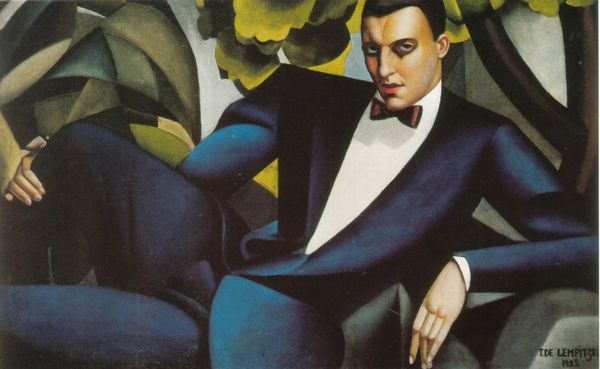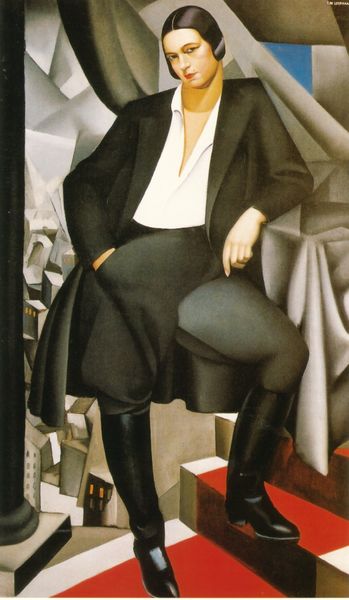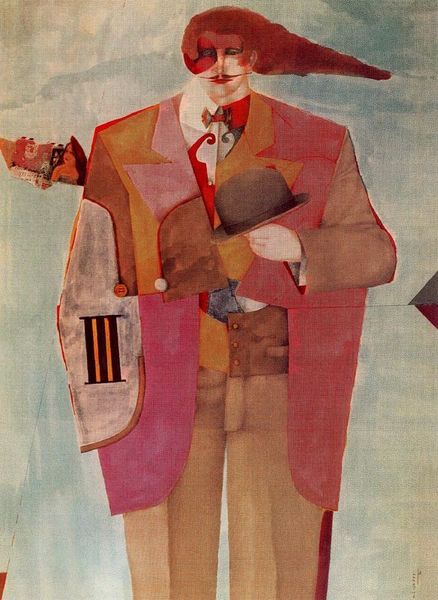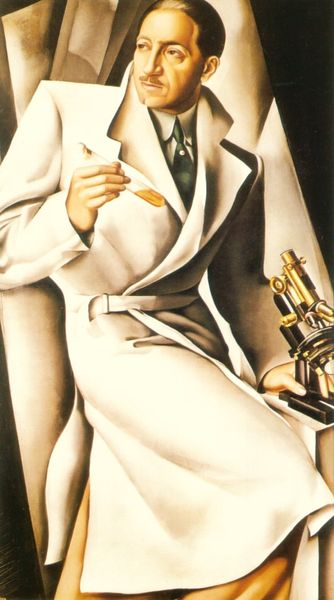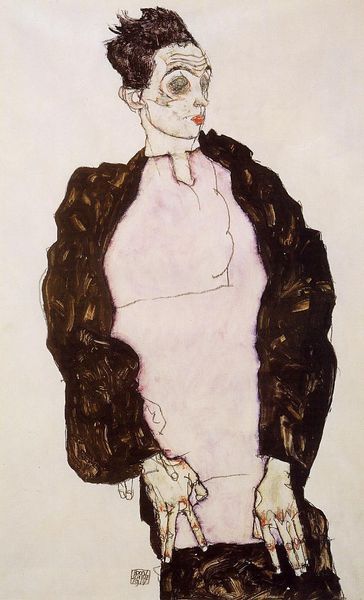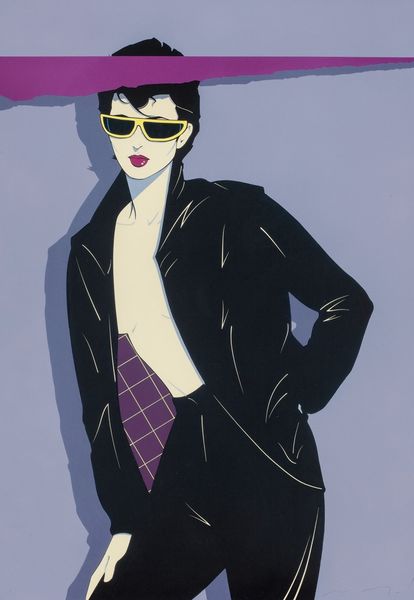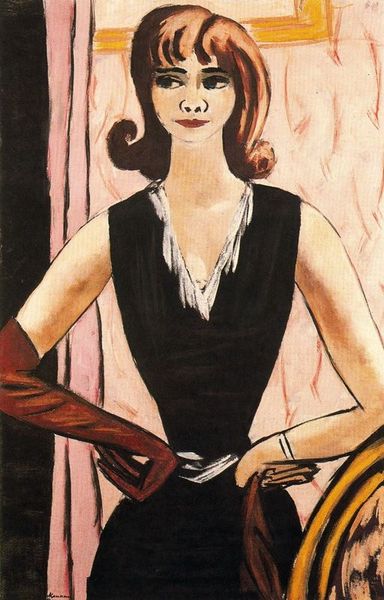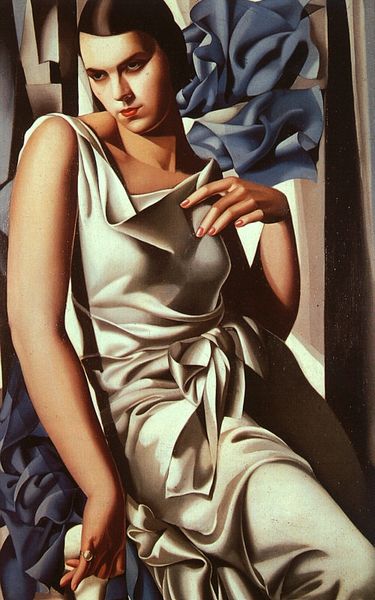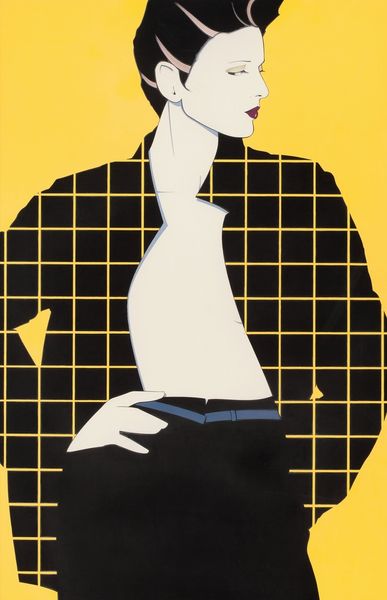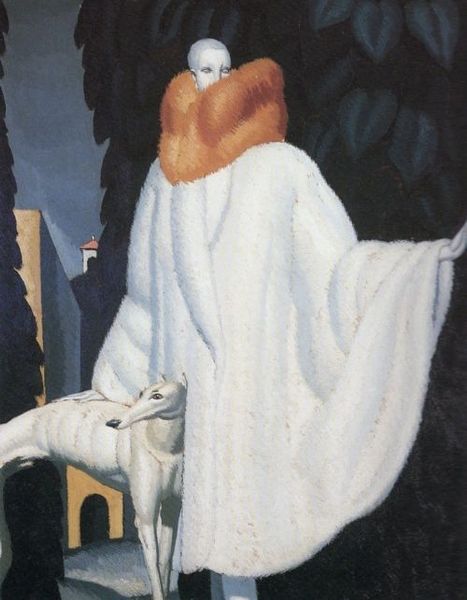
painting, oil-paint
#
portrait
#
art-deco
#
painting
#
oil-paint
#
cityscape
#
modernism
Copyright: Tamara de Lempicka Estate LLC
Curator: Stepping up to Tamara de Lempicka’s “The Marquis D’Afflitto on a Staircase” from 1926, we encounter a fascinating figure. What are your initial thoughts? Editor: My first impression is cool elegance, almost detached. The sharp angles and muted palette lend the portrait a striking, somewhat austere quality. It feels very ‘modern’ for the time, yet there’s something classic about the composition. Curator: The 'classic' element comes from Lempicka’s academic training but the real power resides in the industrial materials. Look closely—the way the paint is applied gives a sheen almost like enamel. It is very controlled. Her studio production must have been rigorously planned! Editor: It’s intriguing how she straddles that line between handcraft and what feels almost like industrial production. This was a period of rapid urbanization and evolving social hierarchies, and you can see this captured. What do we know about the Marquis? Curator: D’Afflitto was a real person—part of that artistic social set of Parisian bohemia—but it’s just as vital to acknowledge that her market demanded that level of portrayal to appeal to aristocracy. What social expectations played a role? I wonder what their relationship was? How was she able to obtain and refine materials such as the high pigment load? Editor: Exactly! He's carefully placed—a symbol of class and social connections during a time of considerable social change and uncertainty following the First World War. There’s a distinct staging here. That background is a symbol of his ascendency. It begs us to understand the art world itself in shaping wealth. Curator: Precisely! It speaks to how artistic skill translated into a high level of art production in the market itself! Editor: Considering the layers here, both in terms of process and cultural relevance, there’s a lot more at play than a simple depiction of nobility. Curator: It definitely invites you to consider how she produced work at scale for an exclusive set. Editor: Right, an exploration into her techniques and background combined with the Marquis himself offers a unique understanding.
Comments
No comments
Be the first to comment and join the conversation on the ultimate creative platform.
